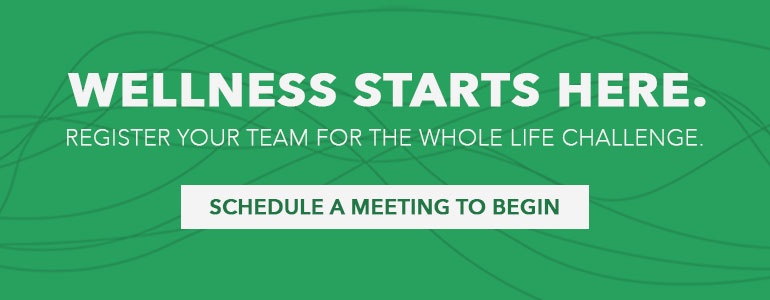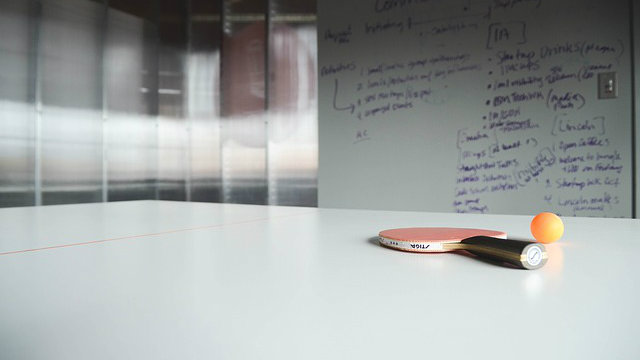No matter how ergonomic your desk-chair-keyboard-monitor setup may be, you need a proven approach for keeping your body and mind as healthy as possible to counter the inevitable damage that results from long-term sedentary work. The good news is that small amounts of exercise (along with healthier food choices) integrated into your work routine can go far to improve your health.
As you prepare to make your move, up from the chair and toward new workplace health habits, we want to help you avoid the common pitfalls that derail even the most eager and outline a long-term path to success. Below are valuable tips to help you succeed in your objectives of improving your workplace health habits, and help you achieve and maintain your goal of optimal wellness and fitness.
The Real Benefits of Changing Workplace Health Habits
People who exercise regularly already know the many benefits of workplace fitness activities, including feeling better, losing excess weight, and having increased energy and mental alertness. Healthy physical activity you do at your workplace and elsewhere adds to your quality of life and job performance in essential ways, including:
- Increased Mental Sharpness — Physical activity increases blood flow to your brain, which helps sharpen your mind, improving your performance.
- Increased Energy — Exercise can increase your energy, helping you feel your best and bring your best to your work.
- Improved Physical Health — Being in your best physical condition can increase your productivity and overall ability to do your job well, improving your eligibility for promotion.
- Minimized Risk of Illness and Disease — Regular cardiovascular exercise (brisk walking, running, jogging, swimming, or light-resistance interval training) increases your immunity. This helps reduce risks of various illnesses and diseases, such as hypertension, heart disease, and type 2 diabetes.
- Reduced Excess Body Weight — Exercise burns body fat, strengthens muscle and connective tissues, improves heart health, increases capillarization, and otherwise improves vascular health. These changes increase stamina, helping you to better meet the physical and mental performance expectations of your professional role.
- Improved Stress Management — Exercising regularly can improve your ability to manage stress, which can help cultivate the best possible working relationships and reputation with your employer.
- Reduced Mental Health Risk — Regular exercise can relieve anxiety and depression. Physical exercise causes the release of endorphins, which stimulate feelings of greater well-being. These chemical actions can make typical workplace stresses seem more manageable.
 Workplace Changes That Do Not Work Long-Term
Workplace Changes That Do Not Work Long-Term
Many people fail at their new health and fitness plans soon after they’re adopted, leaving them feeling frustrated. So, let’s first examine some common approaches to workplace eating and exercise that typically fail, so we know what to avoid.
Ineffective Workplace Eating
- Excessively Restrictive Diets — Attempts to obey a rigid and extremely restrictive diet usually give way to cravings resulting from various deficiencies in nutrients, calories, fats, or proteins.
- Theme Diets — Diets with an insufficient variety of foods may lack essential nutrients, consequently generating cravings that can make adhering to the diet difficult. And, typically, even if an individual succeeds in completing the term of the diet, after he/she then returns to pre-diet eating habits, the results of the diet are rather rapidly reversed.
- Excessively Cutting Food Quantities — The body and mind do not respond well to extended periods of being starved. Fatigue, weakness, poor concentration, depression, poor performance, and slowed physical and mental response time can result from deficiencies in vitamins, minerals, fats, complex carbohydrates, and total caloric intake. Organ damage and other serious consequences can occur in extreme cases.
- Consuming Unpalatable Foods and Beverages — Most people can’t/won’t cope with choking down substances that are inconsistent with their tastes for the sole purposes of nutrition or reaching body composition goals. The probability of long-term success with such a dietary plan is low, and the dieter is more likely to give way to cravings and over-compensate for sorely missed comfort foods.
Ineffective Workplace Exercise
- Intensive Routines — Distance running, extensive weight lifting routines, high-impact aerobics classes, or other exercise sessions that require a full change into sportswear, cool down routines afterward, showering, hair drying, full change back into business wear, and other time-consuming grooming tasks. Unless your workplace is set up for this kind of fitness activity and encourages it as part of the culture (and schedule), then save this activity for off-hours. Opt for comparatively convenient, quick-break activities.
- Dull Routines— This includes activities that you do not enjoy and/or that do not generate noticeable effects. Your sense of what makes a given activity worthwhile is likely to be driven by your fitness level. For example, deep breathing, head rolls, and standing stretches are stress-break activities that everyone on desk work should be doing several times a day. But, for a more advanced exerciser, adding a few squats and push-ups can markedly enhance this five-minute breathe-and-stretch break.
 Workplace Health Habits that Produce Real Results
Workplace Health Habits that Produce Real Results
Simpler, more conservative approaches to office health and fitness efforts are more effective long-term than excessively ambitious ones — simply because they are easier and more enjoyable for people to maintain in the professional environment.
What generally works best is a combination of improved eating and exercise practices that fit into the work routine and that complement other fitness activities people may already be doing outside the workplace. Below are some examples of workplace health habits that can be incorporated into the daily office routine:
Effective Workplace Eating
Here are some easy, delicious, and effective new eating habits you can adopt, that will contribute effectively to good habits at home and elsewhere outside the office:
- A Bowl of Fruit — Keeping a piece of fruit on your desk encourages convenience snacking on natural foods loaded with important nutrients, instead of making trips to the vending machine for empty-calorie junk foods that deprive the body of nutrition and stimulate cravings.
- Healthful Snacks and Beverages — There is a world of delicious natural alternatives to processed snack foods, such as small amounts of almonds, raisins, fresh figs, fruit salad with your favorite natural sweetener, a tomato or avocado with a bit of salt, and so much more. A variety of snacks will help you from falling back on old (less healthy) habits.
- Flavored Water — Fill your water bottle with treated water and add a squeeze of lime, crushed strawberry, or pineapple chunk to perk up your water-drinking experience. This keeps you hydrated and helps manage appetite.
Effective Workplace Exercise
Busy professionals often don’t have time at work to get in a full cardio or strength training session. So, don’t set excessive expectations for what you can expect to accomplish during your work day. Save your major workout routines for personal time.
Instead, establish more realistic changes to your workplace activities. Simpler, easier, more enjoyable physical activities offer much greater promise of sustainability and long-term results. Some popular examples include:
- Walking Breaks — Walk around a part of your building or exterior work campus for ten minutes or so twice each day. Recruit an office-mate or a group to walk with you or go on your own to enjoy your own thoughts. If your work campus offers a treadmill, seize the opportunity to get fifteen to thirty minutes on it.
- Destination Walking — Take the long route to and/or from meetings, restroom, kitchen, lunch, in-box drop-offs, and other workplace destinations. Use these necessary walks as opportunities for maximizing blood circulation and oxygen uptake. Walk a little faster in order to use the same amount of time to reach your destination as you use when taking the shorter route.
- Stress Breaks — Take five-minute breathe-and-stretch breaks several times a day. Stand up and perform movements such as deep breathing and various stretching exercises.
- Light Workouts — Do a short, light-weight routine in the company fitness facility a couple of days per week. Or, keep a pair of dumbbells in your office. These can be used to execute an invigorating fifteen to thirty minute full-body routine, using minimal space.
Getting Started with Your New Health Habits
Just pick a fun form of exercise and get started. Remember, the effects of exercise and healthful eating are cumulative. Expect some false starts, disruption of routine, and other obstacles (especially at first). Make a practice of getting back into your healthy routine immediately. Think of these upsets as a key part of the process. A “bad day” may simply be an indicator that you should experiment with other kinds of activities or foods.
The body responds better to changing routines than to static ones that permit progress-inhibiting adaptation. Which is actually great news because, as part of your health and fitness journey, you will inevitably go through a process of elimination — seeking nutritional sources and exercises that fit best with your preferences, environment, and lifestyle, then trying others, and yet others. Perpetually trying new options will itself become your workplace health and fitness routine. What may at first seem to you be a process of trial and error — or even “getting it wrong” — will actually be a highly-personalized system.
When it comes to incorporating new health habits into your work life, the highest priority must be sustainability based on the nature of the environment. In other words, base activities not just on what’s possible, but on what’s most suitable for your workplace and your interests.








